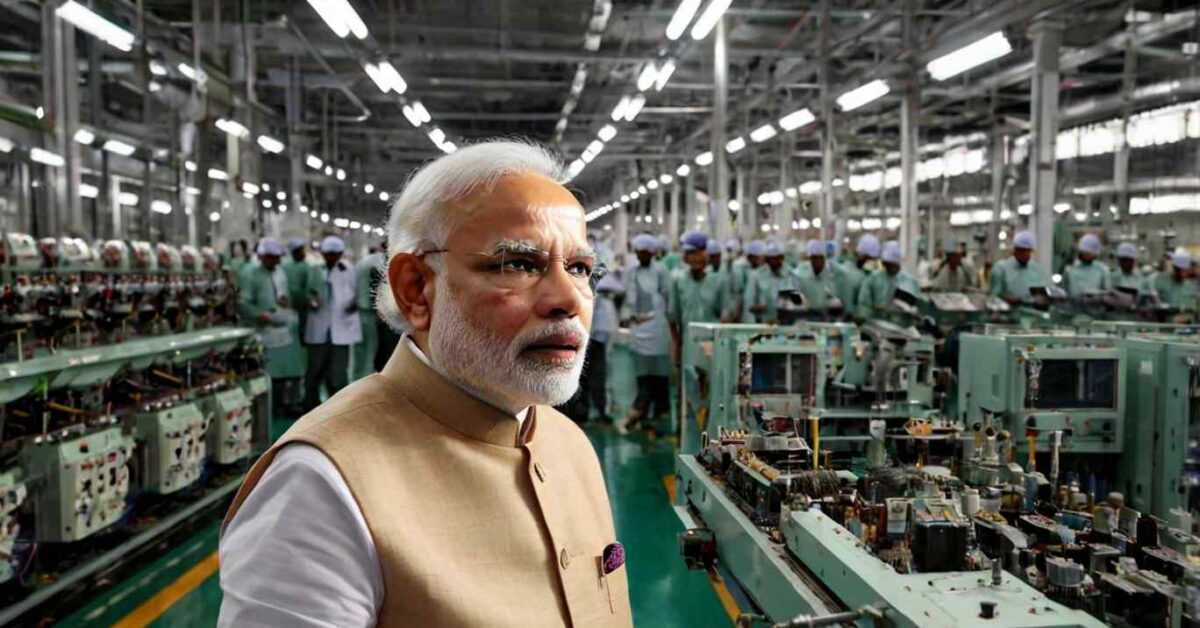Modi’s Plan for India’s Semiconductor Industry in Third Term
Let's take a deep dive into the intricacies of Modi's plan, analyze India's strengths and challenges in the semiconductor industry, and explore the nation's prospects for competing on the global stage.

As the Modi government prepares for its third term in office, Prime Minister Modi remains steadfast in his commitment to making India a semiconductor manufacturing hub.
With a renewed vigor, Modi is poised to aggressively pursue his vision for India’s semiconductor industry, aligning with his overarching goal of bolstering the country’s manufacturing sector.
This commitment is reflected in recent government approvals totaling $15.2 billion US for investments in the semiconductor and electronics industry. Among these initiatives is a groundbreaking joint venture between Tata Electronics and Taiwan’s Power Chip Semiconductor Manufacturing Company, signaling a significant leap forward in India’s semiconductor ambitions.
In this article, we take a deep dive into the intricacies of Modi’s plan, analyze India’s strengths and challenges in the semiconductor industry, and explore the nation’s prospects for competing on the global stage.
Strengths of India’s Semiconductor Industry
In a conversation with industry experts, Director Shu and Professor Leo from the Institution for Economic Research in Taiwan highlighted Prime Minister Modi’s ambitious plan to revitalize India’s manufacturing industry.
This initiative includes bringing back manufacturing sectors like smartphone assembly to India.
However, challenges such as cultural differences and the Indian investment climate remain significant hurdles for Taiwanese companies entering the Indian market.
Challenges and Opportunities
Director Shu outlined the challenges Taiwanese companies face in India, including adapting to a different business environment and navigating India’s complex industrial structure.
Despite these challenges, there is optimism for closer collaboration between Taiwan and India, especially with the Indian government showing flexibility in supporting manufacturers.
India’s Economic Strength
Professor Leo emphasized India’s economic potential, citing its recent rise to become the fourth-largest economy globally. However, infrastructure and political stability are essential factors for India to support the semiconductor industry’s development fully.
Predicting India’s Semiconductor Competitiveness

Ambitious Goals
Both experts acknowledged Prime Minister Modi’s ambition to position India as a strong semiconductor nation. While realistic, achieving this goal requires substantial technological development and collaboration with international partners.
Structural Challenges
Professor Leo highlighted India’s reliance on importing core semiconductor components, which limits its value addition in the industry. To compete globally, India must develop its semiconductor manufacturing capabilities.
India’s Growing Industry and Foreign Relations
Potential for Growth
Despite challenges, India’s semiconductor market is poised for significant growth, presenting competitive implications globally. However, India’s success in competing with major semiconductor manufacturers depends on its ability to build a comprehensive ecosystem and strengthen its geopolitical relationships.
Future Relations
Director Shu and Professor Leo discussed the potential impact of political changes, such as the US presidential election, on India-Taiwan relations. While both experts anticipate continued collaboration between India and the US, trade and migration policies under different administrations could affect India’s trade partnerships.
Final Thoughts
India’s semiconductor moment is here. By leveraging its strengths, addressing challenges, and fostering international partnerships, India can play a more significant role in global semiconductor value chains.
As the world seeks diversification and rebalancing of supply chains, India’s strategic position becomes even more critical. With the right policies and continued collaboration, India can emerge as a semiconductor superpower.
In short, India’s semiconductor industry is poised for growth, driven by its design talent, expanding consumer market, and collaborative efforts. However, challenges such as talent development and policy stability must be addressed to fully realize India’s potential.
The collaboration with Taiwan’s Powerchip Semiconductor Manufacturing sets a precedent for future partnerships, creating a win-win situation for both countries. India’s journey toward semiconductor prominence is underway, and the world is watching closely.
